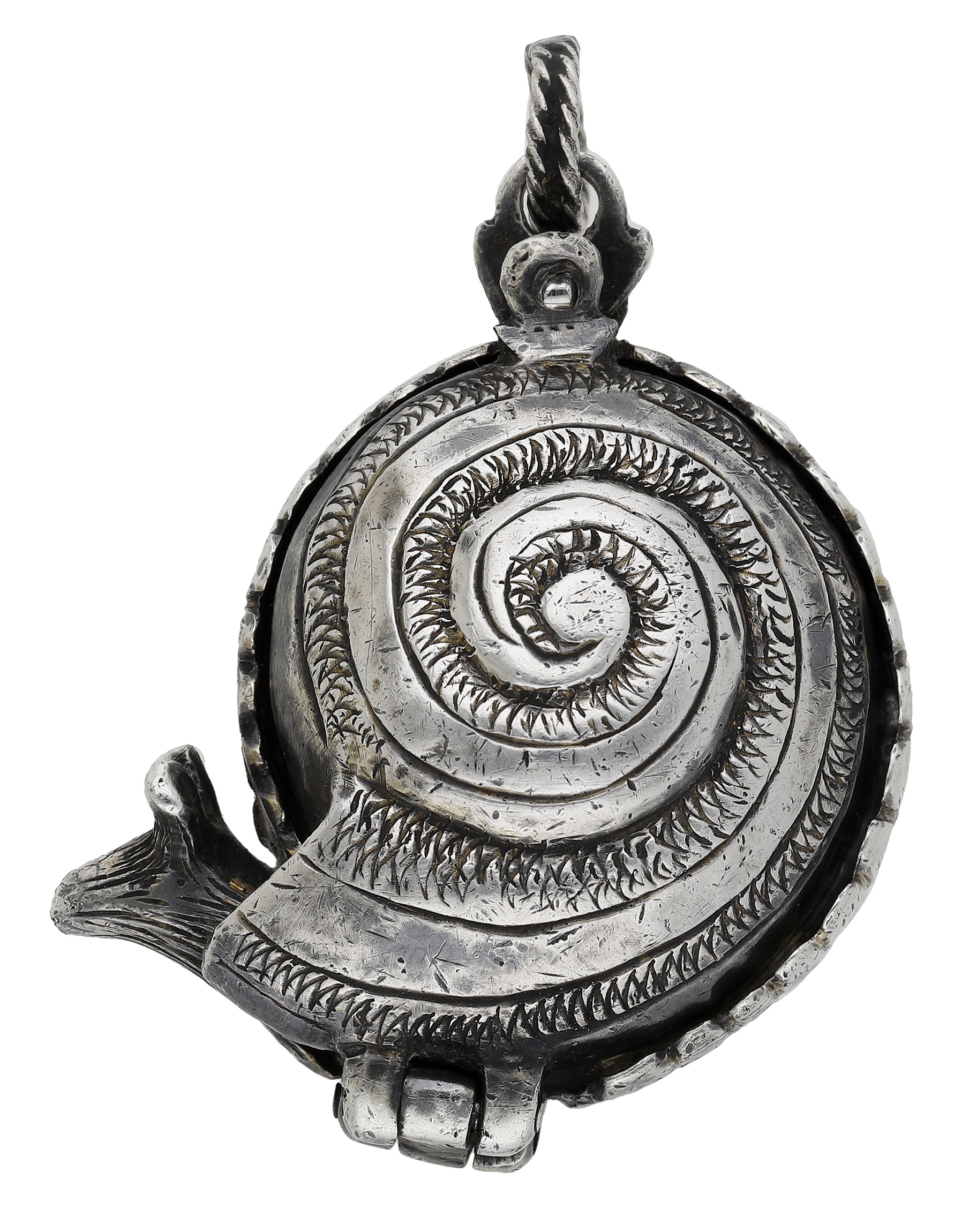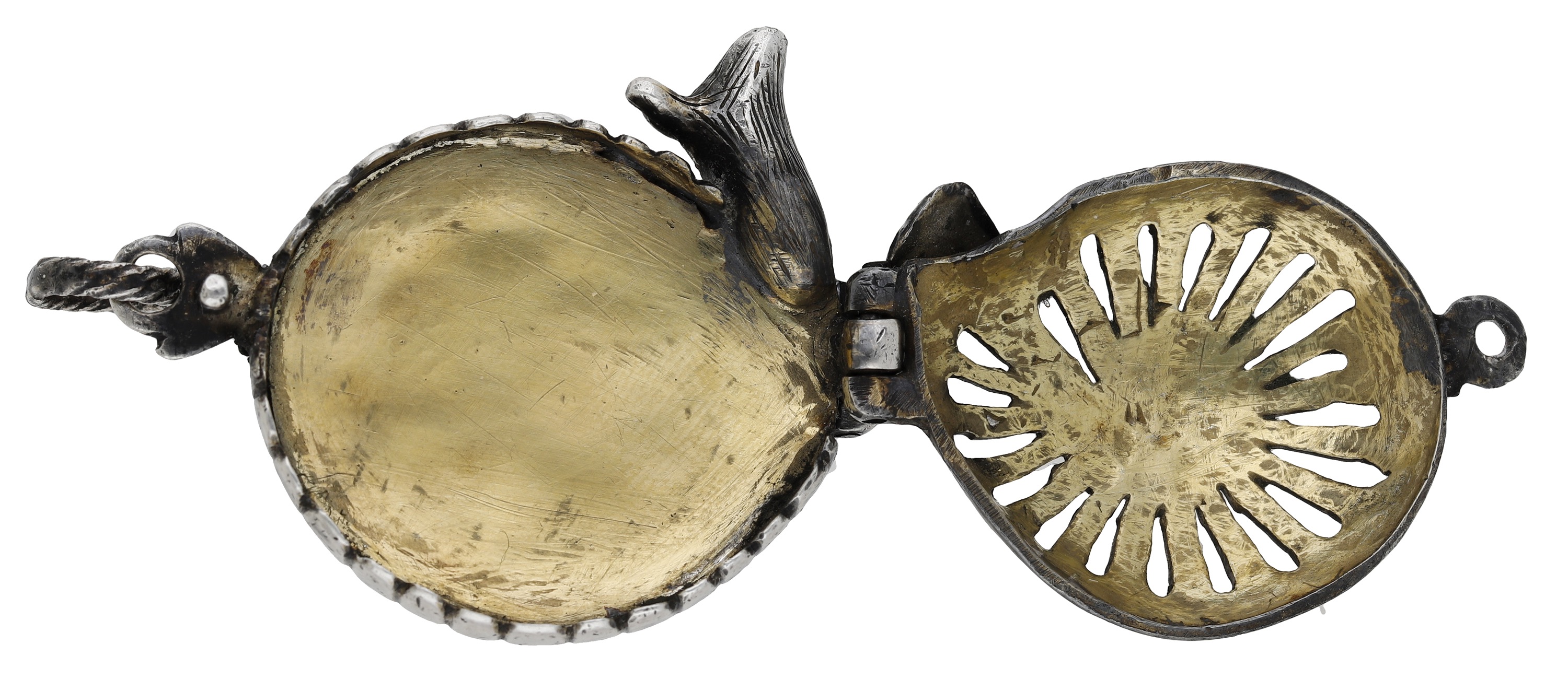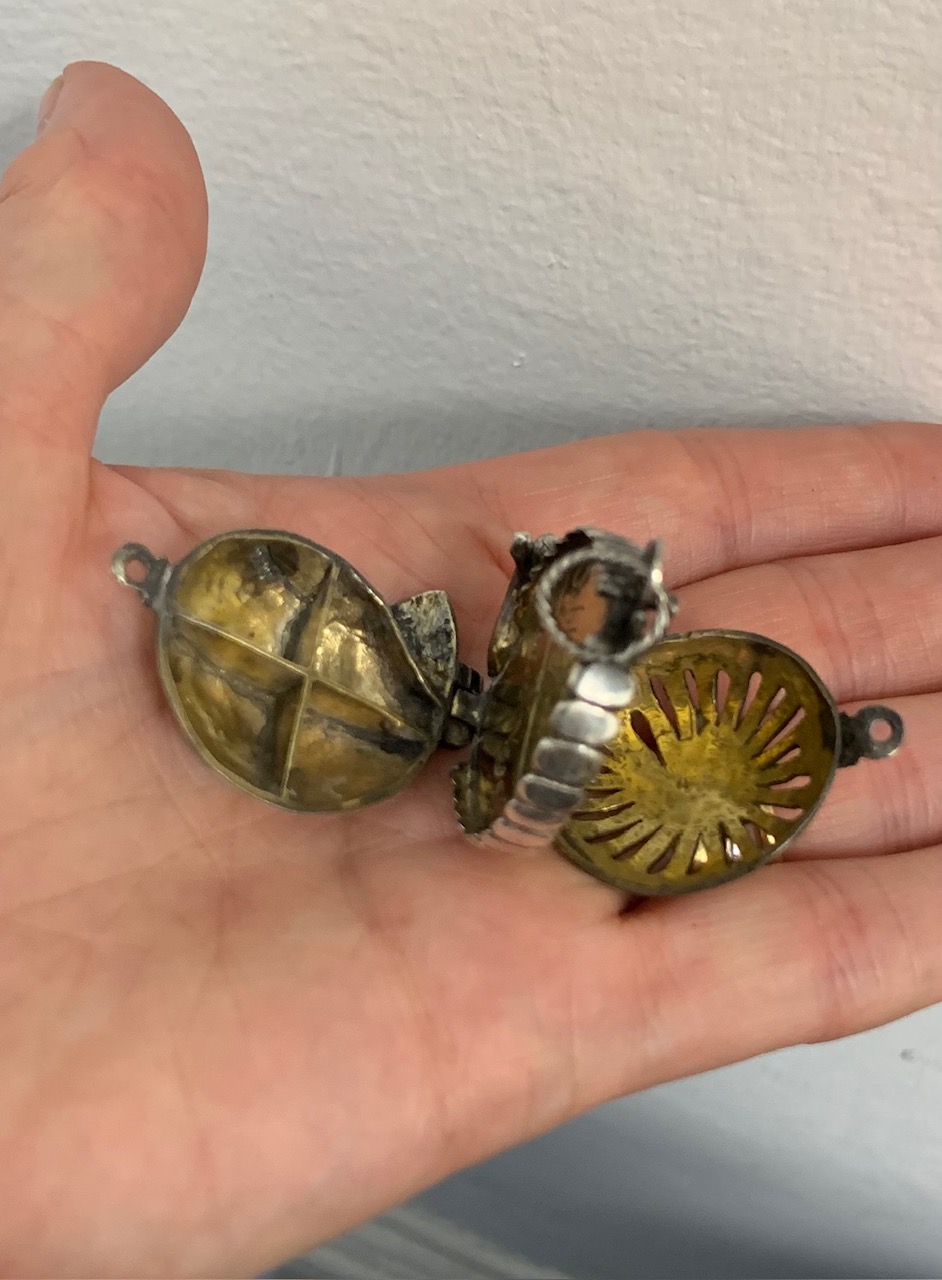452
A silver snail pomander, probably German 17th century, the head emerging from its shell,...
Bids do not include VAT, buyer’s premium or delivery.
By confirming your bid, you agree that you have read and accepted the-saleroom.com and the auctioneer's terms and conditions. Confirming your bid is a legally binding obligation to purchase and pay for the lot should your bid be successful.
Choose one of the quick bid options below:
Bids do not include VAT, buyer’s premium or delivery.
By confirming your bid, you agree that you have read and accepted the-saleroom.com and the auctioneer's terms and conditions. Confirming your bid is a legally binding obligation to purchase and pay for the lot should your bid be successful.
---
The term ‘pomander’ derives from the French term ‘pomme d’ambre’ (apple of amber), the use of a small receptacle for containing scents originating in the Orient from ancient times.
In the Medieval period, it was common practice to wear pomanders in small containers, worn as jewels around the neck suspended from a chain, or attached to a belt or girdle. The strong scents were believed to have protective properties to ward off plaques and air borne diseases, hence the pomander had a dual purpose - as a scent emanator and an amulet against evils. Spices and perfumes such as cinnamon, musk, rosewater, cloves, laudanum and sandalwood might be used.
The spherical form was the most common shape for pomanders, with compartments similar to orange segments. A snail-shaped pomander is unusual, but the mollusk was used in German mannerist ornament by influential designers including Virgil Solis, one of 16th century Germany’s most prolific printmakers, engravers and book illustrators.
The use of the snail form for pomanders had its own symbolism: “the ability of the snail to withdraw into its protective shell at times of danger or hardship has resulted in its becoming the symbol of spring and resurrection”. (Launet)
Literature/Sources:
See engraving by Virgin Solis: Pitcher in the form of a snail, circa 1550; held at the V & A: Accession Number E.2872-1910.
Three similar snail pomanders are held at the V & A, catalogued as ‘scent cases’.
Accession Numbers: M.805-1926, M.806-1926 and M.128-1929.
A similar gold example is held at The Hunt Museum, Limerick: Accession Number MG087.
A further example can be found in the Schwarzkopft Collection:
See Launet, E: Perfume and Pomanders: Scent and Scent Bottles Through the Ages, pub. Potterton Books, 1999, page 22, illustration plate 66.
Condition Report
Gilding largely intact to both interior compartments.
Overall good condition commensurate with age and use.
Gross weight 26.9gm.
---
The term ‘pomander’ derives from the French term ‘pomme d’ambre’ (apple of amber), the use of a small receptacle for containing scents originating in the Orient from ancient times.
In the Medieval period, it was common practice to wear pomanders in small containers, worn as jewels around the neck suspended from a chain, or attached to a belt or girdle. The strong scents were believed to have protective properties to ward off plaques and air borne diseases, hence the pomander had a dual purpose - as a scent emanator and an amulet against evils. Spices and perfumes such as cinnamon, musk, rosewater, cloves, laudanum and sandalwood might be used.
The spherical form was the most common shape for pomanders, with compartments similar to orange segments. A snail-shaped pomander is unusual, but the mollusk was used in German mannerist ornament by influential designers including Virgil Solis, one of 16th century Germany’s most prolific printmakers, engravers and book illustrators.
The use of the snail form for pomanders had its own symbolism: “the ability of the snail to withdraw into its protective shell at times of danger or hardship has resulted in its becoming the symbol of spring and resurrection”. (Launet)
Literature/Sources:
See engraving by Virgin Solis: Pitcher in the form of a snail, circa 1550; held at the V & A: Accession Number E.2872-1910.
Three similar snail pomanders are held at the V & A, catalogued as ‘scent cases’.
Accession Numbers: M.805-1926, M.806-1926 and M.128-1929.
A similar gold example is held at The Hunt Museum, Limerick: Accession Number MG087.
A further example can be found in the Schwarzkopft Collection:
See Launet, E: Perfume and Pomanders: Scent and Scent Bottles Through the Ages, pub. Potterton Books, 1999, page 22, illustration plate 66.
Condition Report
Gilding largely intact to both interior compartments.
Overall good condition commensurate with age and use.
Gross weight 26.9gm.
Jewellery, Watches, Silver and Objects of Vertu
Sale Date(s)
Venue Address
General delivery information available from the auctioneer
If you are successful in purchasing lot/s being auctioned by us and opt for the item/s to be sent to you, we will use the following methods of shipment:
Within the UK
If you live within the UK, items will be despatched using Royal Mail Special Delivery. This service provides parcel tracking (via the Royal Mail website) and next weekday delivery (betwen 9am and 1pm). Items delivered within the UK are covered by our insurance company. Heavy and bulky lots will be sent by courier, in discussion with the client.
Outside of the UK
If the item/s being sent are worth under £1000 in total they are sent using Royal Mail’s Signed For International service. This ensures the item must be signed for when it is delivered.
If the item/s being sent are valued at over £1000 in total they will be sent using FedEx. This service allows next day delivery to customers in many parts of the US and parcels are fully trackable using the FedEx website.
Shipping Exceptions
Certain lots such as those containing glass or sharp implements, etc., may not be suitable for in-house shipping within or outside of the UK. Please contact Noonans with any queries.
Important Information
Auctioneer's Buyers Premium: 24% (+VAT)
There is an additional charge of 4.95% (+VAT/sales tax)























